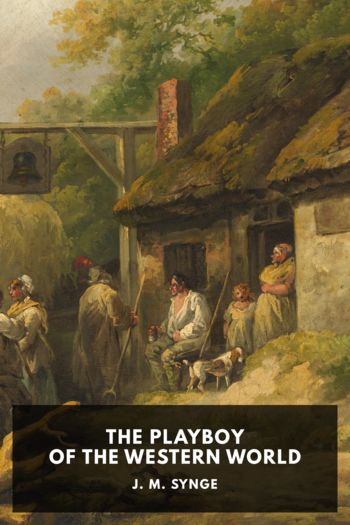Last Flight to Stalingrad by Graham Hurley (simple ebook reader .TXT) 📗

- Author: Graham Hurley
Book online «Last Flight to Stalingrad by Graham Hurley (simple ebook reader .TXT) 📗». Author Graham Hurley
The flight east took just over an hour. Barely minutes from take-off, still climbing, Nehmann caught an expletive in his headset which he assumed came from Rubell. He was celebrating the view from the cockpit. Nehmann leaned forward, his nose against the cold Perspex. With his neck at the oddest angle, he could just glimpse towering columns of smoke on the distant horizon. Stalingrad, he thought. Still burning.
He was right. As they approached the suburbs of the city, Nehmann began to recognise the heavy footsteps of Fliegerkorps VIII:whole areas cratered by bomb blast, street after street of houses reduced to ashes. The ruins were still smouldering, smudges of light grey smoke curling away on the wind, and it took a minute of two for Nehmann to realise that the curious ochre stripes on each plot of land were brick chimneys, the sole evidence that people had once lived here.
‘Incendiary bombs by the thousand.’ Rubell’s voice again. ‘No need to blast anything apart down there. Just set the place alight.’
Nehmann could see the river now, the broadness of the Volga dividing the city in two. On the western bank, the tall white apartment blocks threw long shadows and appeared to be intact. Wrong. Rubell’s voice again in his headphones.
‘We hit them time and time again. If you looked hard enough you could see concrete dust billowing out of the windows. At ground level there was even more of the stuff. My best guess is that the floors inside collapsed.’
‘The people got out?’
‘Not many of them. Not that we could see.’
‘They have air-raid shelters? Like at home?’
‘It seems not.’
Nehmann nodded, raised the camera, took more shots, fidgeting with the focus, hunting for the kind of trophy images that might please the author of this wrecked city: huge petroleum tanks on the riverbank, still aflame, their metal carcasses torn apart; a lake of blazing oil drifting slowly down the river, dragging thick coils of smoke that circled slowly upwards in the updraught from the water; a nearby building on the western shore that must have been a hospital, eviscerated by high explosive, dozens of beds plainly visible inside.
Rubell dropped a wing and then steadied the aircraft for the bombing run. They were running parallel to the river now, no trace of anti-aircraft fire or enemy fighters, the entire city at their mercy, a party box of targets that no bomber pilot could resist. The city centre, according to Rubell, was dominated by a huge Tatar burial mound, Mamaev Kurgan.
‘This is our second helping, Nehmann.’ He laughed. ‘When we arrived on Sunday the Russians were out in force, having their picnics. You never saw people move so fast in your life. Now they know better. Which in some respects is a shame.’
Nehmann felt a blast of cold air as the bomb bay doors opened. He sat back from the Perspex, the camera readied, adjusting the exposure for the gloom of the aircraft’s interior. The bombs nestled in front of him, eggs crudely sculpted in dull metal, tail fins welded at one end. Someone had chalked a message on one of the cylinders. Nehmann was still familiar with Russian from his early days in Georgia and he brought the Cyrillic characters into focus in the viewfinder. With love from Berlin, went the message. Expect more where this came from.
Nehmann squeezed the shutter button, then readied the camera for another shot. At the moment of release the aircraft lurched upwards, suddenly lighter, and then he glimpsed the stick of bombs falling earthwards with a tiny wobble that had an almost dance-like grace. He returned to the gunner’s blister, peering down through the Perspex, hoping to capture the line of explosions as yet more bombs stitched their way across the ruined landscape, but the aircraft had moved on and all he could see was smoke.
18
TATSINSKAYA AIRFIELD, 24 AUGUST 1942
They were back at Tatsinskaya in time for Nehmann to join the queue for goulash and cabbage in the tent that served as a mess. Of Messner there was no sign but Nehmann recognised one of the cameramen from the Propaganda Company he’d briefly got to know in France. His name was Helmut and he was now attached to Sixth Army for the final push to Stalingrad. Helmut had set up a darkroom at Tatsinskaya, strictly to develop stills rather than movie footage. When Nehmann mentioned the photos he’d just taken from the Heinkel, Helmut said he was welcome to help himself.
‘You know how to develop stills?’
‘No.’
‘Then I’ll come, too.’
They walked the five hundred metres to the dank space behind a maintenance facility that Helmut had converted into a darkroom. He locked the door, checked the blackout on the single window, then warmed the inky darkness with the glow of a red lamp. While Nehmann extracted the exposed film from the Leica, Helmut prepared the developing fluids. Within half an hour, they were both bent over the bath of fixer, waiting for the first of the images to swim up through the soup of chemicals.
Nehmann had been witness to this process on a number of occasions and it always fascinated him. The first glimpse of what he’d captured through the camera, its sheer ghostliness, that fog of greys that slowly resolved itself into shapes he recognised, the remains of a city that only a couple of days ago had been intact. This, in Nehmann’s view, was a kind of magic.
One by one, he identified the shots he wanted Helmut to print for Richthofen.
‘You’re seeing him? You’ve got an audience with the





Comments (0)